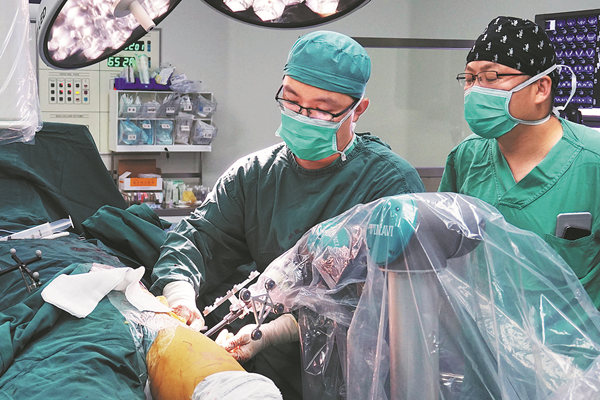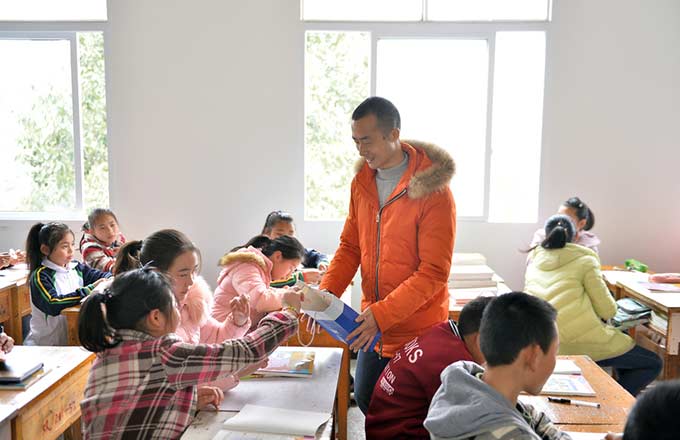China's medical robots take on foreign rivals
 |
|
A doctor uses Phecda, a surgical robot developed by Tinavi, to do orthopedic surgery in Beijing Jishuitan Hospital in 2016. PROVIDEDTOCHINADAILY |
Domestic entries are competing on precision, price
Surgeon Tian Wei came across one of the most challenging orthopedic surgeries in his 30-year career in 2015. A 43-year-old patient had complained of progressive numbness in the limbs on his right side for 14 months, caused by a deformity in his upper cervical vertebrae.
The patient was in dire need of surgery to implant a screw to help support his neck bone, but the operation was risky. Any minor mistake could lead to paralysis or a life-threatening hemorrhage. Many hospitals were unwilling to treat him.
But Tian, who also is president of Beijing Jishuitan Hospital, decided to do the surgery — with a little help from another "surgeon".
The operation was completed in an hour with help from Phecda, a surgery robot with a 3-D high-definition visual system that can "see" the internal orthopedic structure and a "hand" that can guide medical tools to the proper location within 0.8 millimeters.
Developed by Beijing Tinavi Medical Technology Co with the help of Jishuitan Hospital, Phecda is part of the broad effort by Chinese companies to outcompete foreign rivals just as the country's use of medical robots is set to take off, thanks in part to an aging population.
Medical robots are highlighted in the country's Made in China 2025 strategy, which was designed to promote high-end manufacturing.
"That was the world's first robot-assisted surgery on upper cervical vertebrae," Tian said, describing the 2015 clinical trial. "Phecda is more precise than foreign products and its cost is lower."
Phecda, which is the third-generation surgery robot developed by Tinavi, is ready to be commercialized this year after obtaining approval from the China Food and Drug Administration in July.
Chinese medical robot-makers like Tinavi are working hard to outshine foreign companies in both price and quality as they benefit from ample demand, strong policy support and manufacturing prowess, company executives and experts said.
By 2050, more than 400 million Chinese will be over 60 years old, accounting for more than 30 percent of the population, up from about 11 percent now, official data show.
"The growing number of senior citizens will offer a sizable quantity of clinical cases, and enterprises can leverage a huge database to accelerate research and development," said Zhang Songgen, chairman of Tinavi.
In April, China unveiled its plan to sell more than 30 billion yuan ($4.4 billion) worth of domestic service robots by 2020. Medical robots are an important part of the ambitious goal, Zhang said.



















